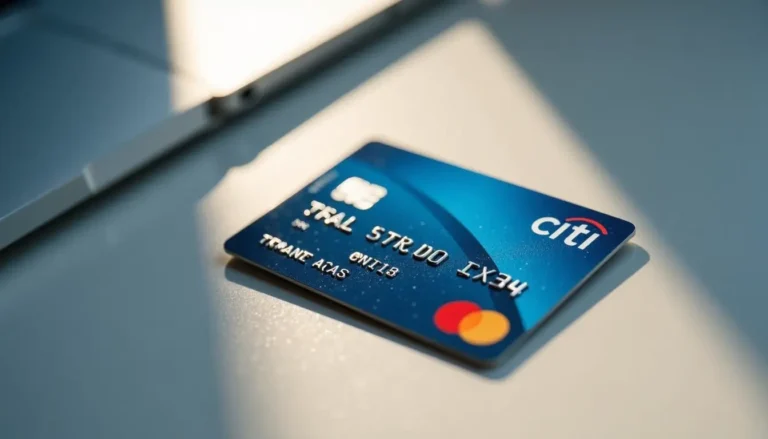Debt can feel like a heavy burden that blocks your path to financial freedom. Many find themselves overwhelmed, unsure of where to turn or how to escape the cycle. But there is hope – the best debt relief programs offer tailored solutions that can help you regain control of your finances.
Imagine waking up without the stress of mounting bills or constant calls from creditors. These programs are designed to provide you with a clear, actionable path to reduce or manage your debt effectively. Understanding your options is the first step toward this brighter future.
This article will guide you through various debt relief strategies, helping you find the right approach based on your unique situation. Let’s explore how you can start your journey towards financial freedom today.
Understanding Debt Relief and How It Works
Debt relief means finding ways to manage or reduce the money you owe so that you can regain control over your finances. There isn’t a one-size-fits-all solution; instead, multiple programs exist to help you depending on your situation. Understanding how these options work can guide you toward the best debt relief programs for your needs.
One popular method is debt consolidation. This involves combining several debts into a single loan with usually a lower interest rate. By doing this, payments become simpler and potentially less expensive, making it easier to track what you owe and reduce your monthly burden. It doesn’t erase your debt, but it often makes repayment more manageable.
Another option is debt settlement. In this approach, you or a company negotiates with your creditors to reduce the total amount you owe. You might pay a lump sum that’s lower than your full balance, settling the debt for less than the official amount. While this can save money, it may impact your credit score, so understanding the trade-offs is important.
Credit counseling offers a different kind of support by helping you create a budget and develop a personalized plan to pay off debt. Counselors typically provide advice and may set up a debt management plan, which organizes payments and sometimes secures lower interest rates. This method focuses on financial education and long-term stability rather than quick fixes.
Choosing the best debt relief program can provide much-needed financial breathing room. It reduces stress from endless bills and calls, giving you a clearer path forward. With the right program, you gain structure, potential savings, and hope to rebuild your financial health.
Evaluating Your Financial Situation Before Choosing a Program
Before diving into any of the best debt relief programs, you need to take a good, honest look at your current financial picture. Start by listing all your debts, including credit cards, personal loans, medical bills, and any other amounts you owe. Be sure to note the total balances, interest rates, minimum monthly payments, and due dates. This helps you understand where your money is going and which debts are costing you the most.
Next, calculate your total monthly income from all sources—whether it’s your salary, side jobs, or benefits. Compare this to your regular monthly expenses, such as rent, utilities, groceries, transportation, and insurance. Don’t forget to include smaller or irregular costs like subscriptions or annual fees. This balance sheet shows if you have extra funds to allocate toward debt relief or if there’s a need for more drastic measures.
Checking your credit report is crucial. It not only reveals your debt status but also lets you spot errors or fraudulent activities that might affect your options. You can get a free credit report annually from the major credit bureaus. Understanding your credit score will guide you in choosing debt relief programs that best match your financial profile.
Organization is key. Use spreadsheets or budgeting apps to keep all this data clear and accessible. Set realistic goals, such as reducing debt by a certain amount each month or improving your credit score over time. Being thorough and truthful in this evaluation makes sure you pick a program that fits your actual situation, not just what sounds good in theory. This careful groundwork builds a stronger path to regaining your financial freedom.
Exploring Debt Consolidation as a Practical Solution
Debt consolidation is one of the most popular options among the best debt relief programs because it offers a clear path to managing multiple debts more easily. Essentially, it involves combining several debts—like credit cards, personal loans, or medical bills—into a single loan or payment plan. This can make paying off what you owe less overwhelming.
Two common types of debt consolidation are loan consolidation and balance transfer credit cards. Loan consolidation means you take out a new loan to pay off your existing debts. This can give you a lower interest rate and one monthly payment instead of many. For example, if you have three credit cards with high rates, a consolidation loan might reduce your overall monthly payments, freeing up cash to cover essentials.
Balance transfer credit cards work differently. You transfer your existing credit card balances onto a new card that offers a low or 0% introductory interest rate for a period, often 12 to 18 months. This can save you money on interest if you pay off the balance within that time. But beware—these cards usually require good credit scores and may charge transfer fees.
While consolidation can simplify payments and reduce interest costs, it’s important to watch out for risks. Missing payments on a consolidation loan can hurt your credit. Also, some lenders have strict eligibility rules—like needing a minimum credit score or steady income.
To choose a credible lender or program, check their reviews, confirm they are licensed in your state, and avoid companies that demand upfront fees. It helps to compare loan terms carefully and ask questions before signing. With the right approach, debt consolidation can ease financial stress and set you on a path to greater financial freedom.
How Debt Settlement Programs Help You Negotiate Lower Balances
Debt settlement programs work by negotiating directly with your creditors to reduce the total amount you owe. Instead of paying your full debt balance, a trained negotiator aims to settle for less, often a lump sum that’s less than the original balance. This approach can significantly lower your debt burden, making it easier to regain control of your finances.
This option is usually best for people struggling to make even minimum monthly payments and who have enough savings to cover a negotiated settlement. It’s important to understand that entering a debt settlement program typically means you’re behind on payments, which can negatively impact your credit score. However, for many, the benefit of reducing debt outweighs the short-term credit damage.
The process often starts with a thorough review of your debts and finances. Then, the settlement company reaches out to your creditors to propose lower payoff amounts. Once an agreement is reached, you usually need to deposit funds into an escrow account to demonstrate your ability to pay. After the lump sum payment is made, your debt is considered settled and closed.
Debt settlement companies usually charge fees based on a percentage of the settled debt or from your monthly payments during the process. Because of this, it’s crucial to work with trustworthy firms that are transparent about fees and operate under state laws. Avoid companies that promise quick fixes or demand large upfront payments.
Consider Sarah’s situation: she owed $15,000 but couldn’t keep up with monthly bills. Through debt settlement, negotiators reduced her balance to $9,000. This lowered payment made it possible for her to pay off the debt faster and avoid bankruptcy. Stories like hers highlight how carefully chosen settlement programs can offer a lifeline for people overwhelmed by unsecured debt.
Credit Counseling Services and Their Role in Debt Management
Credit counseling services play a vital role in many of the best debt relief programs available today. These services provide more than just help with debts—they focus on building strong financial habits that last a lifetime. When you work with a credit counselor, you gain access to personalized budgeting guidance tailored to your income and expenses. This step helps you see where your money goes each month and identify areas to cut back, making repayment more manageable.
Financial education is another key piece of credit counseling. Counselors teach practical skills like how to use credit responsibly, the importance of saving, and ways to avoid future debt troubles. This knowledge empowers you to make smarter decisions with money, which is essential for long-term financial health.
Credit counselors often offer Debt Management Plans (DMPs), a structured approach that organizes your payments into a single monthly amount. Counselors negotiate with creditors on your behalf, which can sometimes lead to reduced interest rates or waived fees. This makes repayments more affordable and less overwhelming. Importantly, these counselors support you throughout the process, helping you stay on track and fostering healthier money habits.
One of the biggest benefits of credit counseling is the relief it provides from financial stress. Knowing you have a clear, manageable plan can ease anxiety and restore confidence in your financial future. To maximize these benefits, it’s essential to choose accredited agencies. Verify their credentials through organizations like the National Foundation for Credit Counseling (NFCC) to ensure you receive trustworthy guidance. This step protects you and helps you find the best debt relief program tailored to your needs.
Steps to Take After Choosing the Best Debt Relief Program for You
Once you’ve chosen one of the best debt relief programs, it’s crucial to set realistic expectations. Understand that resolving debt takes time; quick fixes are rare. Be patient with the process and prepare for gradual progress. This mindset helps maintain focus and reduces frustration along the way.
Regularly monitoring your progress is key to staying on track. Keep detailed records of payments made and balances remaining. Many programs provide online tools or statements—use these to review your status monthly. If something doesn’t seem right, don’t hesitate to reach out to your program provider for clarification.
Open and honest communication with your creditors is essential. Let them know you’re actively working to resolve your debt through the chosen program. If your financial situation changes, inform your creditor promptly to avoid misunderstandings or penalties. Clear communication often prevents unnecessary fees and supports a smoother debt relief journey.
Avoid common pitfalls such as taking on new debt or ignoring calls from creditors. Stick to your budget and resist impulses that could derail your efforts. Keeping your financial goals front and center will help you stay motivated when temptation arises.
Maintaining motivation can be challenging, but celebrate small victories, like reaching a payment milestone. Adjust your plan if circumstances change, but always aim to adhere to the agreed terms. If complications arise, seek professional advice—credit counselors or financial advisors can provide guidance tailored to your situation.
Consistency remains the foundation of success with any debt relief program. By dedicating effort and staying informed, you strengthen your path to long-term financial freedom.
Regain Control and Embrace Financial Freedom
The journey to overcoming debt starts with understanding your options and making informed choices. Best debt relief programs offer practical ways to reduce your financial burdens and reshape your money management habits. Remember, taking that first step toward debt relief is a powerful move toward a more secure future.
As you explore these solutions, keep your goals clear and stay committed to the process. There is no one-size-fits-all answer, but with the right guidance and support, financial freedom is within reach.
We invite you to share your experiences or questions in the comments below and to share this article to help others find their way out of debt.


